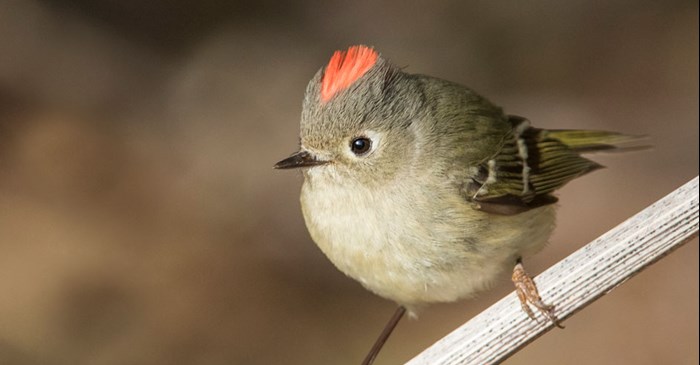Identifying the Ruby-crowned Kinglet isn’t always as straightforward as its name indicates. The male’s eye-catching, bright red crown of feathers is on display during nesting season, and only while he’s singing his territorial song.
Otherwise, if you catch sight of this tiny bird, they’re plain in appearance, greenish-gray with white around the eyes, and black wing bars with streaks of lemon yellow. To confirm their identity, look for darting movements and wing flicking.
Migration of the Ruby-crowned Kinglet
The Ruby-crowned Kinglet can be found just about anywhere in the U.S., depending on the timing. During nesting season, these birds live across the western U.S. and throughout Canada, nesting and foraging high in the treetops of dense conifer forests. In winter, these tiny birds live primarily throughout the southern U.S. states, though they can also be found in pockets of the west.
As for the remainder of the country, the best opportunity for birders to check off this species from their lists is during the migration season, as the Kinglets make the long journey to warmer climates.
Nesting behavior of the Ruby-crowned Kinglet
During the summer, these little birds accomplish some amazing feats in nesting that put other songbirds to shame. Their nests are higher — in the treetops, as much as 100 feet off the ground. They produce an astonishingly large quantity of eggs — with as many as a dozen in a single clutch. And their nests are specially engineered to hold and protect them. Made of grasses, spiderwebs, feathers, moss and cocoon silk — strong, stretchy materials that allow the nest to expand as the many eggs get added — these nests appear quite thick and cushy, the shape resembling a kindergartner’s thumb bowl.
What does the Ruby-crowned Kinglet eat?
In the warm-weather months, their diets are insect focused. They spend much of their time in the trees, hovering and grabbing food from tree branches and leaves. In winter, they eat seeds and berries. They’ll visit feeders if there are small pieces, such as sunflower kernels and peanut hearts, which their fine, slender beaks can accommodate. Lyric Fine Tunes No-Waste Mix is 100% edible. Not only does it appeal to the songbirds, but it also leaves no mess in your yard.
